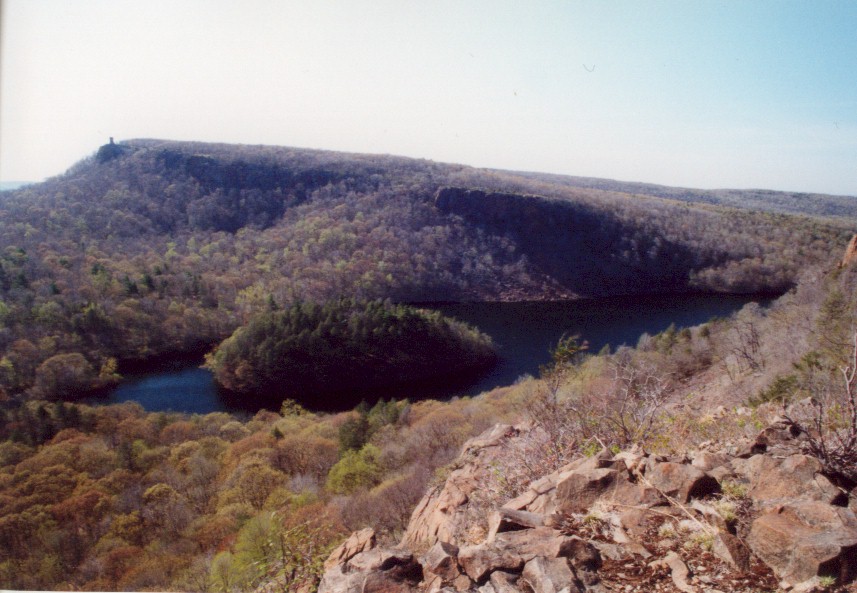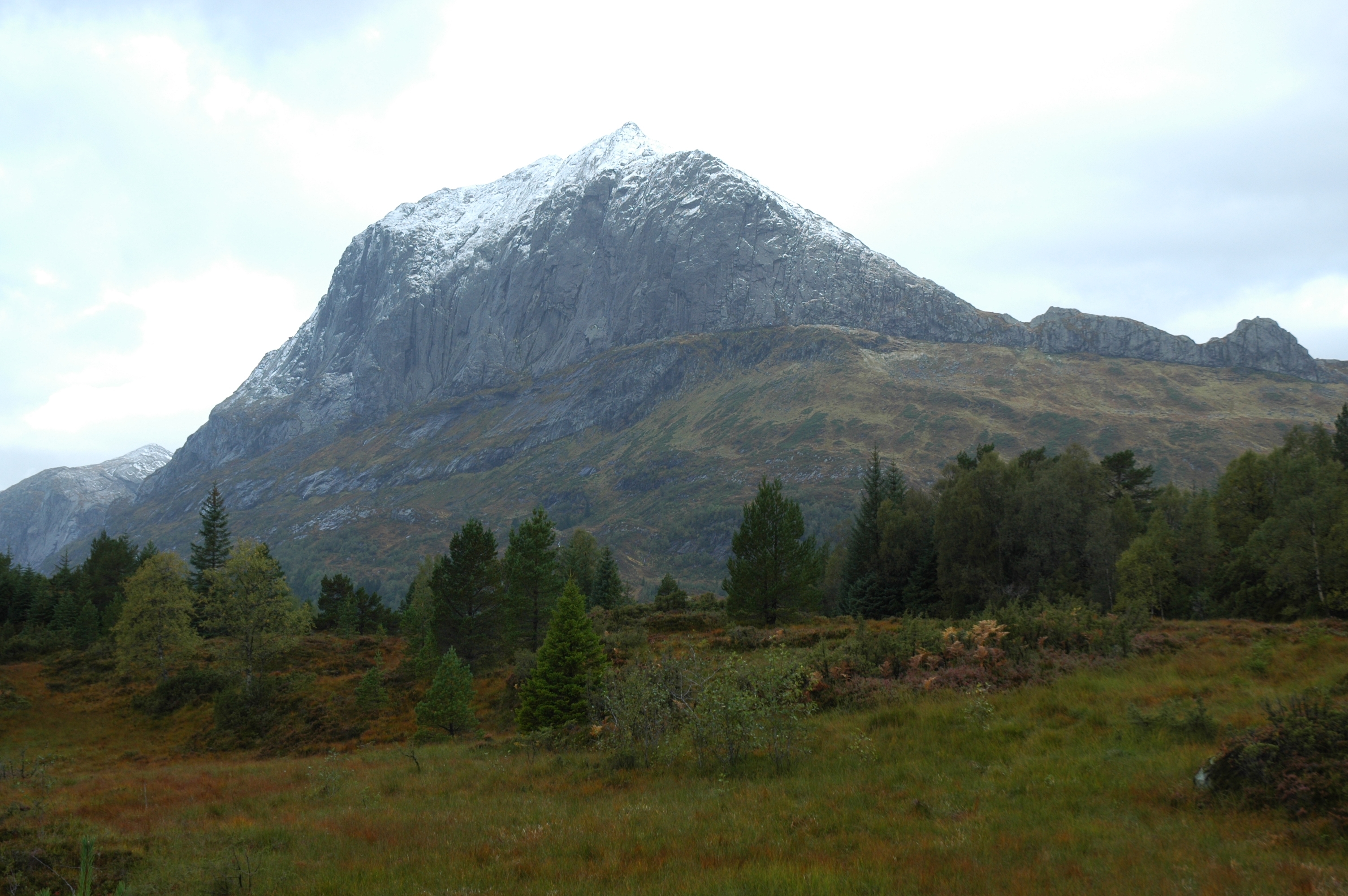|
Post-orogenic Collapse
In geology, orogenic collapse is the thinning and lateral spread of thickened crust. It is a broad term referring to processes which distribute material from regions of high gravitational potential energy to regions of low gravitational potential energy. Orogenic collapse can begin at any point during an orogeny due to overthickening of the crust. Post-orogenic collapse and post-orogenic extension refer to processes which take place once tectonic forces have been released, and represent a key phase of the Wilson Cycle, between continental collision and rifting. Description Orogens (also known as orogenic belts, or more simply mountain ranges) are sections of thickened crust which are built up as tectonic plates collide. The thickening of the crust marks the start of an orogeny, or "mountain building event." As the orogeny progresses, the orogen may start spreading apart and thinning. Collapse processes can begin either once the orogeny ends as the tectonic forces cease, or dur ... [...More Info...] [...Related Items...] OR: [Wikipedia] [Google] [Baidu] |
Extensional Tectonics
Extensional tectonics is concerned with the structures formed by, and the Tectonics, tectonic processes associated with, the stretching of a planetary body's Crust (geology), crust or lithosphere. Deformation styles The types of structure and the geometries formed depend on the amount of stretching involved. Stretching is generally measured using the parameter ''β'', known as the ''beta factor'', where : \beta = \frac \,, ''t''0 is the initial crustal thickness and ''t''1 is the final crustal thickness. It is also the equivalent of the Strain (materials science), strain parameter ''stretch''. Low beta factor In areas of relatively low crustal stretching, the dominant structures are high to moderate angle normal faults, with associated half grabens and tilted block faulting, tilted fault blocks. High beta factor In areas of high crustal stretching, individual extensional faults may become rotated to too low a dip to remain active and a new set of faults may be generated. Lar ... [...More Info...] [...Related Items...] OR: [Wikipedia] [Google] [Baidu] |
Subduction
Subduction is a geological process in which the oceanic lithosphere and some continental lithosphere is recycled into the Earth's mantle at the convergent boundaries between tectonic plates. Where one tectonic plate converges with a second plate, the heavier plate dives beneath the other and sinks into the mantle. A region where this process occurs is known as a subduction zone, and its surface expression is known as an arc-trench complex. The process of subduction has created most of the Earth's continental crust. Rates of subduction are typically measured in centimeters per year, with rates of convergence as high as 11 cm/year. Subduction is possible because the cold and rigid oceanic lithosphere is slightly denser than the underlying asthenosphere, the hot, ductile layer in the upper mantle. Once initiated, stable subduction is driven mostly by the negative buoyancy of the dense subducting lithosphere. The down-going slab sinks into the mantle largely under its own ... [...More Info...] [...Related Items...] OR: [Wikipedia] [Google] [Baidu] |
Fault Block
Fault blocks are very large blocks of rock, sometimes hundreds of kilometres in extent, created by Tectonics, tectonic and localized stresses in Crust (geology), Earth's crust. Large areas of bedrock are broken up into blocks by Fault (geology), faults. Blocks are characterized by relatively uniform lithology. The largest of these fault blocks are called crustal blocks. Large crustal blocks broken off from tectonic plates are called terranes. Those terranes which are the full thickness of the lithosphere are called microplates. Continent-sized blocks are called variously ''microcontinents, continental ribbons, H-blocks, extensional allochthons and outer highs.'' Because most stresses relate to the tectonic activity of moving Plate tectonics, plates, most motion between blocks is horizontal, that is parallel to the Earth's crust by Fault (geology)#Strike-slip faults, strike-slip faults. However vertical movement of blocks produces much more dramatic results. Landforms (mounta ... [...More Info...] [...Related Items...] OR: [Wikipedia] [Google] [Baidu] |
Basin And Range Topography
Basin and range topography is characterized by alternating parallel mountain ranges and valleys. It is a result of crustal extension due to mantle upwelling, gravitational collapse, crustal thickening, or relaxation of confining stresses. The extension results in the thinning and deformation of the upper crust, causing it to fracture and create a series of long parallel normal faults. This results in block faulting, where the blocks of rock between the normal faults either subside, uplift, or tilt. The movement of these blocks results in the alternating valleys and mountains. As the crust thins, it also allows heat from the mantle to more easily melt rock and form magma, resulting in increased volcanic activity. Types of faulting Symmetrical faulting: horst and graben With crustal extension, a series of normal faults which occur in groups, form in close proximity and dipping in opposite directions. As the crust extends it fractures in series of fault planes, some ... [...More Info...] [...Related Items...] OR: [Wikipedia] [Google] [Baidu] |
American Cordillera
The American Cordillera ( ) is a chain of mountain ranges (cordilleras), consisting of an almost continuous sequence of mountain ranges that form the western "backbone" of the Americas. Aconcagua is the highest peak of the chain. It is also the backbone of the volcanic arc that forms the eastern half of the Pacific Ring of Fire. Description North America The overlapping and parallel ranges begin in the north with the Alaska Range and the Brooks Range in Alaska, and run through the Yukon into British Columbia. The main belt of the Rocky Mountains along with the parallel Columbia Mountains and Coast Ranges of mountains and islands continue through British Columbia and Vancouver Island. In the United States, the Cordillera branches include the Rockies, the Sierra Nevada, the Cascades, and various small Pacific coastal ranges. In Mexico, the Cordillera continues through the Sierra Madre Occidental and Sierra Madre Oriental, as well as the backbone mountains of the Baja Cali ... [...More Info...] [...Related Items...] OR: [Wikipedia] [Google] [Baidu] |
Basin And Range Province
The Basin and Range Province is a vast United States physiographic region, physiographic region covering much of the inland Western United States and Northern Mexico, northwestern Mexico. It is defined by unique basin and range topography, characterized by abrupt changes in elevation, alternating between narrow faulted mountain chains and flat arid valleys or basins. The physical geography, physiography of the province is the result of Extensional tectonics, tectonic extension that began around 17 million years ago in the early Miocene epoch. The numerous ranges within the province in the United States are collectively referred to as the "Great Basin Ranges", although many are not actually in the Great Basin. Major ranges include the Snake Range, the Panamint Range, the White Mountains (California), White Mountains, and the Sandia Mountains. The highest point fully within the province is White Mountain Peak in California, while the lowest point is the Badwater Basin in Death Valle ... [...More Info...] [...Related Items...] OR: [Wikipedia] [Google] [Baidu] |
Geological Survey Of Denmark And Greenland
The Geological Survey of Denmark and Greenland () is the independent sector research institute under the Danish Ministry of Climate and Energy. Headquartered in Copenhagen, Denmark, GEUS also maintains field offices in Nuuk, Greenland. GEUS is an advisory, research and survey institute in hydrogeology, geophysics, geochemistry, stratigraphy, glaciology, ore geology, marine geology, mineralogy, climatology, environmental history, air photo interpretation, geothermal energy fields concerning Denmark and Greenland. GEUS works in close corporation with Geologisk Institut and Geologisk Museum, both part of University of Copenhagen. It publishes a service paper called ''Greenland Hydrocarbon Exploration Information Service'' (GHEXIS) and a newsletter called Greenland Mineral Exploration Newsletter (MINEX) in co-operation with the Bureau of Minerals and Petroleum (Råstofdirektoratet), a secretariat for the Joint Committee on Mineral Resources under Greenland's home rule. Histo ... [...More Info...] [...Related Items...] OR: [Wikipedia] [Google] [Baidu] |
Marine And Petroleum Geology
''Marine and Petroleum Geology'' is a peer-reviewed scientific journal covering marine and petroleum geology. It was established in 1984 and is published by Elsevier. The editor-in-chief is Massimo Zecchin ( Istituto Nazionale di Oceanografia e di Geofisica Sperimentale) and (Max) Qinhong Hu (The University of Texas at Arlington). Abstracting and indexing The journal is abstracted and indexed in: According to the ''Journal Citation Reports'', the journal has a 2017 impact factor The impact factor (IF) or journal impact factor (JIF) of an academic journal is a type of journal ranking. Journals with higher impact factor values are considered more prestigious or important within their field. The Impact Factor of a journa ... of 3.281. References External links * Geology journals English-language journals Marine geology Petroleum geology journals Bimonthly journals Elsevier academic journals Academic journals established in 1984 {{Geology-journal-stub ... [...More Info...] [...Related Items...] OR: [Wikipedia] [Google] [Baidu] |
Cenozoic
The Cenozoic Era ( ; ) is Earth's current geological era, representing the last 66million years of Earth's history. It is characterized by the dominance of mammals, insects, birds and angiosperms (flowering plants). It is the latest of three geological eras of the Phanerozoic Eon, preceded by the Mesozoic and Paleozoic. The Cenozoic started with the Cretaceous–Paleogene extinction event, when many species, including the non-avian dinosaurs, became extinct in an event attributed by most experts to the impact of a large asteroid or other celestial body, the Chicxulub impactor. The Cenozoic is also known as the Age of Mammals because the terrestrial animals that dominated both hemispheres were mammalsthe eutherians ( placentals) in the Northern Hemisphere and the metatherians (marsupials, now mainly restricted to Australia and to some extent South America) in the Southern Hemisphere. The extinction of many groups allowed mammals and birds to greatly diversify so that large m ... [...More Info...] [...Related Items...] OR: [Wikipedia] [Google] [Baidu] |
Scandinavian Mountains
The Scandinavian Mountains or the Scandes is a mountain range that runs through the Scandinavian Peninsula. The western sides of the mountains drop precipitously into the North Sea and Norwegian Sea, forming the fjords of Norway, whereas to the northeast they gradually curve towards Finland. To the north they form the border between Norway and Sweden, reaching high at the Arctic Circle. The mountain range just touches northwesternmost Finland but are scarcely more than hills at their northernmost extension at the North Cape (). The mountains are relatively high for a range so young and are very steep in places; Galdhøpiggen in South Norway is the highest peak in mainland Northern Europe, at ; Kebnekaise is the highest peak on the Swedish side, at , whereas the slope of Halti is the highest point in Finland, at , although the peak of Halti is situated in Norway. The Scandinavian montane birch forest and grasslands terrestrial ecoregion is closely associated with the mou ... [...More Info...] [...Related Items...] OR: [Wikipedia] [Google] [Baidu] |
Nordfjord-Sogn Detachment
The Nordfjord—Sogn Detachment (NSD) is a major extensional shear zone in Norway up to 6 km in thickness, which extends about 120 km along strike from Nordfjord to Sognefjord, bringing Devonian continental coarse clastic sedimentary rocks into close contact with eclogite facies metamorphic rocks of the Western Gneiss Region. It formed towards the end of the Caledonian Orogeny and was mainly active during the Devonian. It has an estimated displacement of at least 70 km and possibly as much as 110 km. It was reactivated during the Mesozoic and may have influenced the development of fault structures in the North Sea rift basin. Extent The NSD is recognised from the western end of the Sognefjord through to the northern shore of Bremanger, a distance of about 120 km. The exposure is fairly continuous, broken occasionally by fjords and some later high-angle faults, such as the Standal Fault. There is evidence from seismic reflection data that the structure co ... [...More Info...] [...Related Items...] OR: [Wikipedia] [Google] [Baidu] |




